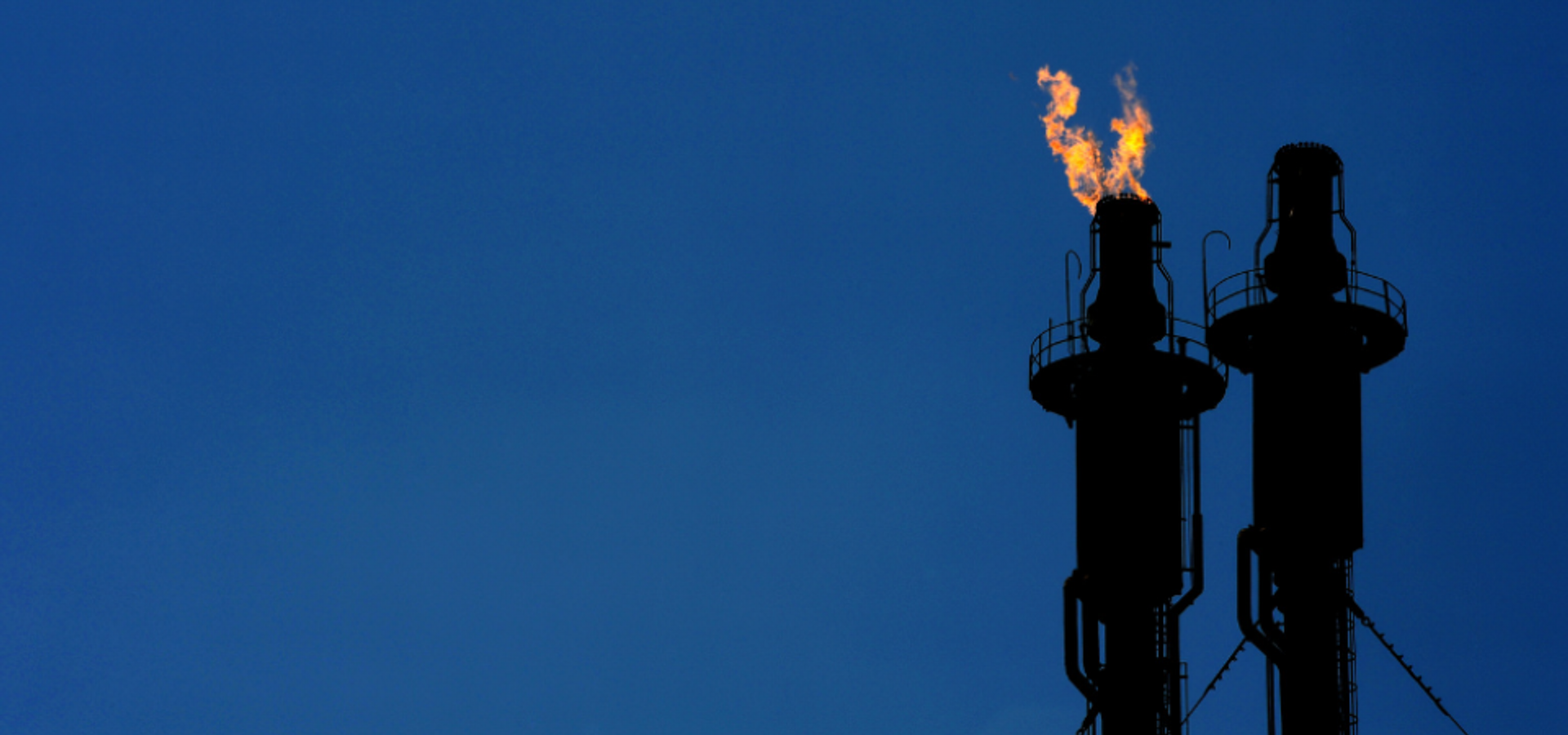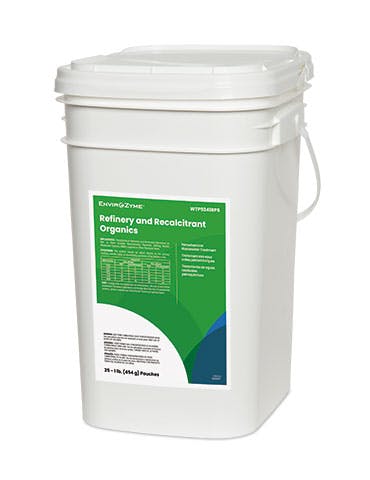
Why Petrochemical Wastewater Is Difficult to Treat and What You Can Do About It
Petrochemical wastewater is generated by the oil industry and contains a broad group of chemicals derived from petroleum and natural gas. The specific sources of petrochemical wastewater are diverse, but significant contributors include oilfield production—in which crude oil is extracted from oil wells—as well as refinery plants—where crude oil is converted into refined products, such as gasoline and lubricating oils.
Composition and Variance
During refinery, the water that naturally occurs in crude oil must be removed and disposed of, along with the water used throughout the conversion process. The water from each refinery unit in each stage of conversion contains varying organic and inorganic chemicals and contaminants, with fluctuating levels of toxicity and degradability. All of these must be managed before discharge, generally in accordance with the flow chart below.

The variability in terms of wastewater composition—summarized in the table below—the complexity of the contaminants themselves, and stringent discharge limits all impart a measure of difficulty, making successful treatment of petrochemical wastewater notoriously challenging.
| Refinery Unit | Purpose | Wastewater | Contaminants |
|---|---|---|---|
| Crude oil storage unit | Removes water and solids from crude oil | Bottom water and sediments | COD, Hydrocarbons, oil, TSS, Sulfides |
| Desalter | Removes dissolved salts in water: calcium, sodium and magnesium chlorides Prevents from water hydrolysis that can lead to corrosive hydrochloric acid production | Desalter effluent (high temperature) | COD, Hydrocarbons, oil, TSS, Sulfides, Ammonia, Phenol, Calcium, Magnesium and Sodium chlorides |
| Atmospheric distillation | Separates valuable distillates (naphtha, kerosene, diesel) and atmospheric gas oil (AGO) from the crude feedstock | Sour water (high temperature) | COD, Hydrocarbons, oil, Sulfides, Ammonia, Phenol |
| Vacuum distillation | Separates valuable distillates from the reduced crude by lowering the ambient | Sour water (high temperature) | COD, Hydrocarbons, oil, Sulfides, Ammonia, Phenol |
| Hydrotreating | Removes contaminants (sulfur, nitrogen, saturate olefins and aromatics) | Sour water | COD, Hydrocarbons, oil, Sulfides, Ammonia |
| Hydrocracking | Removes feed contaminants (nitrogen, sulfur) Converts long chain hydrocarbons to short chain hydrocarbons | Sour water | COD, Hydrocarbons, oil, Sulfides, Ammonia |
| Catalytic reforming | Converts low octane naphtha into a high octane reformate Produces high purity hydrogen for Hydrotreating processes | Sour water | Oil, Sulfides, Ammonia, Phenol |
| Isomerization | Converts low octane n paraffins to high octane iso paraffins | COD, Phenol, sulfides, Ammonia | |
| Fluid catalytic cracking | Converts long chain hydrocarbons to short chain hydrocarbons (more valuable) | Phenolic sour water (high temperature) | COD, Hydrocarbons, oil, Sulfides, Ammonia, Phenol, Cyanides, alkalinity |
| Delayed coker | Converts low value residuals to valuable products (naphtha and diesel) and coker gas oil by thermal cracking | Phenolic sour water | COD, Hydrocarbons, oil, Sulfides, Ammonia, Phenol, Cyanides |
| HF alkylation | Combines light olefins (propylene and butylene) with isobutane to form a high octane gasoline (alkylate) | Low pH, sulfides, chlorides, TSS | |
| Neutralization | Extracts acidic components from hydrocarbons streams | Sulfidic Spent caustic, Phenolic spent caustic (treated separately) | H2S, organic acids, Phenol, Hydrogen Cyanide, Carbon dioxide |
| Amines treating | Removes acid gases (H2S and CO2) from the liquefied petroleum gases | MEA, DEA, MDEA, DIPA, DGA |
Pretreatment
Before petrochemical wastewater can be biologically treated with bacteria to digest organic content, it must be pretreated to eliminate free oil and solids. Perhaps unsurprisingly, the pretreatment process for biological stabilization depends heavily on the source and exact contaminants, and can include:
Physical pretreatment:
- Adsorption of hydrocarbons by substances such as active carbon
- Evaporation to remove free oil in wastewater that contains both petrochemicals and salt
- Dissolved air flotation to remove elevated FOG (fat, oil, grease) and suspended solids
- Micro- or ultra-filtration prior to reverse osmosis or similar treatment
Chemical pretreatment (promoting hydrolysis):
- Micro-aeration to enhance biodegradability of high hydrocarbon content components
- Coagulation-flocculation for removal of suspended solids and specific petrochemicals (e.g., aromatic compounds)
- Ozonation, again for removal of specific petrochemicals (e.g., phenol)
Micro-electrolysis to remove COD
While biological treatment of petrochemical wastewater has the benefits of being extremely effective and cost efficient, the complexity of the organic compounds makes them less susceptible to degradation. These difficult-to-degrade organics are also known as recalcitrant organics, and the success of their removal depends on the type of biological system employed, wastewater source and composition, as well as operational factors.
While anaerobic systems require less space, generate less sludge, and have the added sustainable benefit of methane production, when COD is taken as a general indicator of efficiency, they are not quite as effective as aerobic systems. In studies, anaerobic systems used to treat wastewater from a heavy oil refinery are capable of 65–70% COD removal. Aerobic systems—which are easier to operate, especially when treating petrochemical wastewater, because they have proven less sensitive to toxicity and have a faster microbial growth—removed 80–97.9% of COD. Some operations employ an integrated system that utilizes both anaerobic and aerobic biological treatment.
Regardless of biological system, bacteria and nutrients can be specifically selected for more effective and efficient recalcitrant organic break down, such as in new EZ Refinery and Recalcitrant Organics. Used as a daily maintainer or in upset recovery, this product aides in the management of petrochemical hydrocarbons, as well as BOD and COD, in a convenient water-soluble package.
Common Problems
Because petrochemical wastewater can be difficult to manage, problems may crop up more often. Below are common issues faced by petrochemical wastewater treatment operations, as well as their potential solutions.
- Problem: Solids floating on the surface of a secondary clarifier, coupled with effluent TSS permit exceedances.
- Solution: In this case, the root of the problem is denitrification. Operators may increase wasting to reduce total inventory, as well as supplement with EZ Nitrification for rapid ammonia and nitrite reduction.
- Problem: Scum on the surface of a secondary clarifier, plus effluent TSS permit exceedances.
- Solution: Extremely low food-to-mass ratio, which can be correct with increased wasting and instituting step-feed.
- Problem: Loss of nitrification.
- Solution: Poor oxygen transfer efficiency should be improved however possible, with bacteria added to shorten recovery time.
- Problem: Loss of settling, accompanied by foam on the aeration basis and high polymer demand for dewatering.
- Solution: Maintain and monitor nutrient addition pre-aeration to combat viscous bulking, following up with India ink stains to observe tightly versus loosely bound EPS.
- Problem: Foam on the aeration basin.
- Solution: Nocardiaform filaments must be controlled with chlorine addition in RAS and/or suspension of MBBR.
Diagnosing these and other problems is crucial to effective treatment. Through our new Microscopic Analysis service, we are helping petrochemical water resource recovery plants diagnose and rectify issues, as well as address diverse challenges related to water and environmental technologies.
